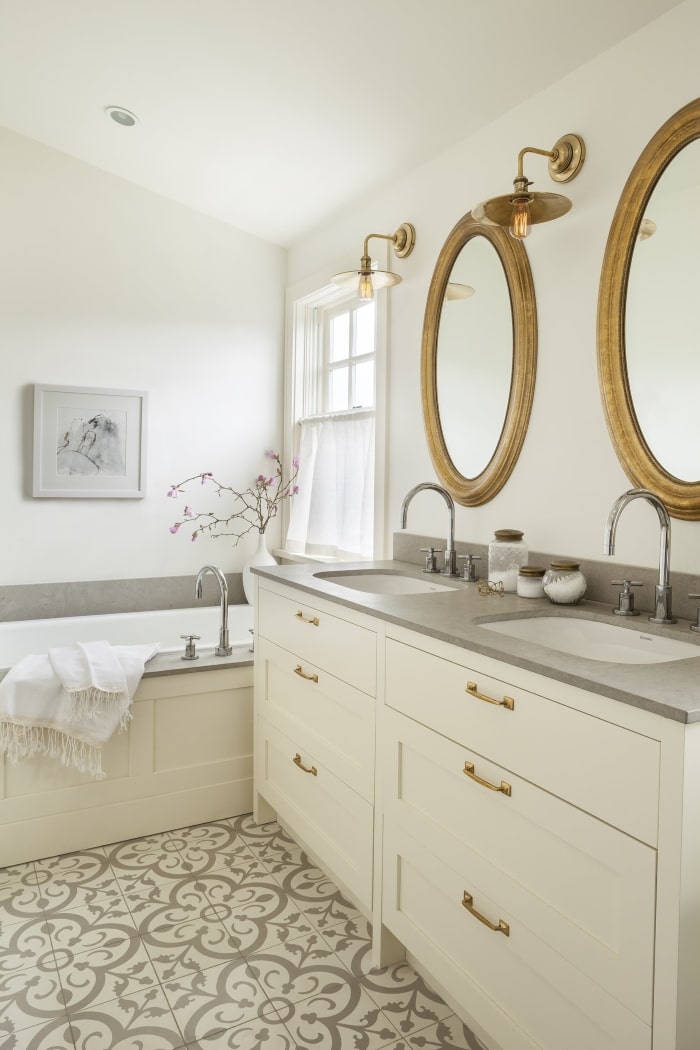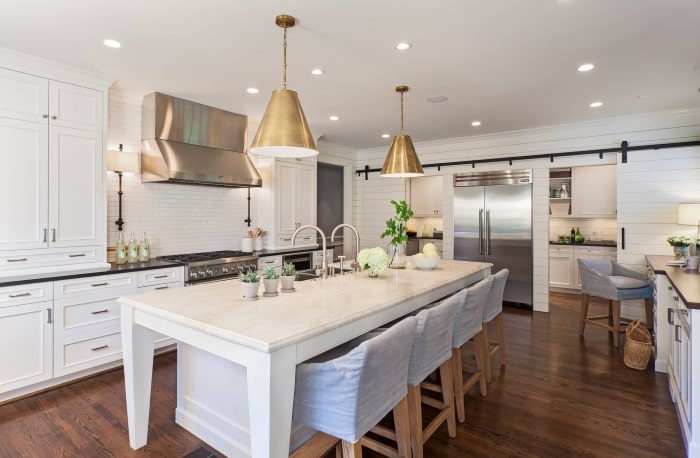Mixing Hardware Finishes is an Art
An eclectic blend of hardware finishes will appeal to today’s buyer. The trick is doing it tastefully.
At the height of the building boom, builders had to move fast to stay on top of their production schedules, especially with material and labor shortages. In some cases that led them to use whatever fixtures they could get easily and quickly. As a result, you have a mixing of hardware finishes. The master bathroom might end up with oil-rubbed bronze faucets on the vanity, a brushed nickel light fixture, chrome plumbing fixtures in the tub and a polished brass door knob. Today, those same builders are often under extreme pressure to use whatever fits in the budget, and the end result is typically the same – a combination of several finishes in a single room.

But if approached correctly, the blending of finishes is not necessarily a bad thing. While individual designers have their own opinions on what works and what doesn’t, there’s more latitude than one might think when it comes to mixing and matching.
Eclectic Touches
In a market where resale value is a high priority, using suites of matching finishes is the safest thing to do, if not the most interesting. But when people intend to live in their homes longer – as is the case with most buyers today – they will respond more favorably to eclectic touches. “With the slow economy and people living in their homes more, we’re looking to create differences, not uniformity,” says Irvine, Calif.-based interior designer Kelli Ellis. “Now it’s okay to mix things.”
Bellevue, Wash.-based interior designer Gail Monica Dent, owner of Provanti Designs, likes to create what appears to be a collection of fixtures, rather than a set. She finds that people respond favorably when the various fixtures in a room look like a collection of items that were purchased by the same person at different times. “It’s much more fun and interesting, although it takes a little work to do.”

Guidelines
If there’s a general guideline about mixing and matching finishes, it’s that mixing two contrasting finishes in a single space is fine, while three or more will appear cluttered or confusing. Jamie Kern, ASID, president of Design Theory Interiors in Atlanta, says that when working on a kitchen or bathroom she prefers faucets in one finish, with a contrasting finish on cabinet hardware. “I like the dynamics of the contrast, as it allows each element to have its own identity,” she says. “And it also gives you some flexibility.”
Another method of blending finishes in a bathroom can be used when a shower, tub or vanity is treated as a focal point. Examples might be a shower with the luxurious Waterhill® Spa suite or the nature-inspired Bamboo® Shower collection, both from ShowHouse® by Moen®. In this situation, Kern recommends using faucets with a different finish than the other fixtures as another means of setting it apart and adding visual interest.
The above guidelines apply to wood finishes as well. In fact, contrasting wood finishes within a space are a must to prevent “visual monotony,” according to Kern. She says that the contrast will highlight each piece much more effectively than a sea of identical finishes, making for a more interesting space.
Products: www.CabinetKnobsandMore.com

